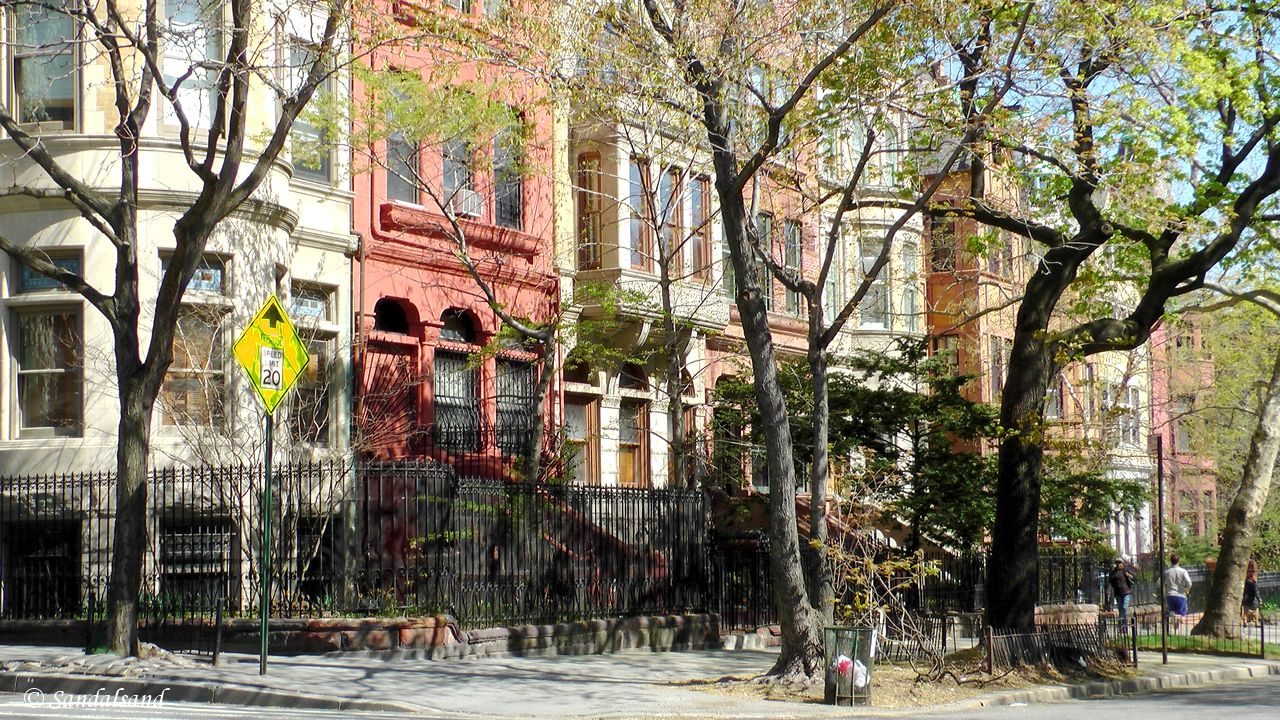What a pleasant surprise. Harlem was once a ghetto, yet with historical monuments, profound religious expressions and a jazzy atmosphere.
Preconceptions
Poverty, crime, violence, drug addicts, and a predominantly uneducated African American population hostile to any other ethnic group. These used to be the prejudices held by many potential visitors to Harlem, for decades.
These conceptions were not entirely misconceptions. Most of the “bad” statistics of New York was worst in Harlem. By 1950 the population was 98% black, in 1990 only a third of male teenagers stood the chance of getting older than 65, the crime rate among young people was 50% higher than the New York average, etc.
We foreigners were told to stay out of Harlem, or hide inside a taxi and go full speed through the neighbourhood if we really wanted to see it. Don’t stop and by no means get out of your car!
On the other hand, we all knew about the successes on the cultural, social, and artistic scene called the Harlem Renaissance during the 1920s and 1930s. Jazz clubs like the Cotton Club and theatres like the Apollo made Harlem swing. In addition, Harlem has always been a very religious neighbourhood with more than 400 churches to chose from for a population of something more than 300,000.
The times they are a-changin’ and Harlem is slowly emerging as an area of New York that visitors should seek out, again. On our week-long visit to New York we went on our first guided tour, on a Sunday. The highlight was supposed to be the attendance of a morning Gospel service.
To our great joy we found there was more to experience in Harlem than sitting on the gallery watching a very active congregation of local Baptists.
Impressions
We were on a guided bus tour, starting at Times Square, and making our way north on Manhattan west of Central Park. Shortly after passing Central Park we made a short stop outside the Cathedral of Saint John the Divine, rolled on past Columbia University, crossing the Morningside Heights and driving north past the General Grant National Memorial.
By now we were actually in Harlem. And we couldn’t tell!
Our first real stop was beyond our imagination.
Hamilton Grange National Memorial
I have never heard of any founding mothers but there were a few founding fathers of the United States. Alexander Hamilton was one of them. The right hand of George Washington had made his way up in society and created an estate on the outskirts of New York. The name of the estate was the Grange, named after his grandfather’s property in Scotland.
Anyway, this is a house that was completed in 1802, it has been relocated and changed in subsequent years. We were not able to get inside on our visit, but found the house and the location near the NY University a fine one.
After the Grange we walked down Convent Street, a quiet, sedate residential area with lovely houses. Yet again, this was completely different from our preconceptions of Harlem. Our next stop was even more remarkable. From the Hamilton Grange, roughly on West 141st Street we continued north to our next stop on 162 Street.
Roger Morris Park
The next stop was the Roger Morris Park which includes Manhattan’s oldest surviving house, the Morris-Jumel Mansion. This is a huge step back in time. To 1765 to be accurate. It was originally a summer retreat for a British colonel and his American wife. This house is without equal in New York – there used to be a lot more of the type.
There is more to this.
The mansion owns a superb location on a hill, and in the days of Morris, it was the centre of a large property here in Harlem. Morris was forced back to England and the house became the headquarters for George Washington in the autumn of 1776. Later a French emigrant, Stephen Jumel, and his wife Eliza, bought the property. The Mansion has been preserved as a monument since 1904.
Sylvan Terrace
To get to the mansion we had parked on St. Nicholas Avenue and walked up the Sylvan Terrace. The latter was originally the carriage drive of the Morris estate. In 1882-83 twenty wooden houses were constructed along the drive. They are still intact, as some of the very remaining framed houses in Manhattan. Have a look at this web page and also this article in the New York Times.
The Morris Jumel Mansion, which Duke Ellington called the “The Crown of Sugar Hill” is right next to 555 Edgecombe, a residential block. Once it was the home of famous people like Joe Louis, Count Basie, Paul Robeson, Thurgood Marshall, Lena Horne, Coleman Hawkins, Erskine Hawkins, Canada Lee, Teddy Wilson, Mary Lou Williams, Russell Procope, Johnny Hodges, and a lot more.
It has been said that “Besides being one of the most prestigious addresses of the Harlem Renaissance, it is one of New York’s most opulent apartment buildings.”
Greater Central Baptist Church
From here we made a large detour over to the Bronx and then back to Harlem. Our tour company had an arrangement with the local congregation. We were a bit late and were led up onto the gallery.
Baptists are not modest people and the singers and band performing here this Sunday were not at all hiding their devotion. There was an eagerness expressed that surpassed our (Norwegian) imagination and the pastor, besides mentioning all nationalities present in the church, made sure to say that “this is not a show, this a real service in the name of God”.
The church is on Facebook.
Cotton Club
This is a famous club, in fact a legendary nightspot in Harlem. It was for decades a place where prominent black entertainers performed for white audiences. The club served as the springboard to fame for Duke Ellington, Cab Calloway, and many others.
We visited the club not on a Sunday “celebrity night”. It was in the late morning, but it was Sunday nonetheless.
These days the Cotton Club is on a different location and with a slightly different content. We arrived as part of their “brunch and gospel” concept, had a decent buffet and a band playing for us. Their senior lady vocalist knew what she was doing and was a good entertainer, to the enjoyment of us foreigners and a busload of retirees from Long Island.
More from Harlem
You could certainly spend a lot more time here in Harlem and be happy about that. It was a lovely day. We were surprised to see how clean the streets were, how wide the boulevards, and how quiet the neighbourhood seemed. Harlem was not at all like we had thought it would be like.
On the other hand, this was a guided bus tour.
Sandalsand’s New York map
This article is part of a series from a week-long visit to New York City. We planned our visit by pinpointing on a map all attractions we wanted to visit, skipped some and connected the rest with walking routes.
The result is illustrated on this map. At first sight it seems immensely overcrowded. Fortunately you may zoom in, click the markers, hide specific walks, and even expand the map into a new tab or window.
Read more
All articles from New York:
(3) Liberty Island, Ellis Island and the Financial District
(4) The High Line, Greenwich Village and Flatiron
In addition there is a special entry from New York’s own World Heritage Site, the Statue of Liberty.



